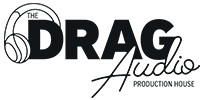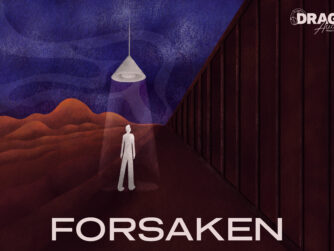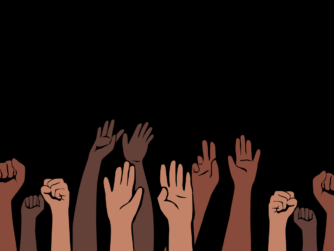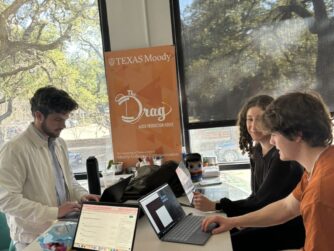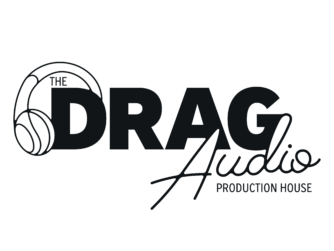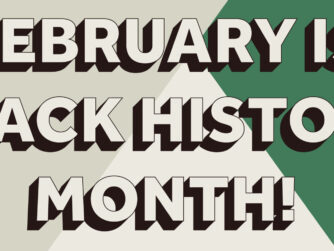Podcast director Sara Schleede has more than a few audio tips and tricks up her sleeve. This past summer, she produced “Request Pending,” a podcast about niche internet communities. She is currently working on “35,” an upcoming podcast on stories tied to Interstate 35. In addition to her work at The Drag, Schleede is an audio producer for the weekly political podcast “Texas Take,” and she has previous experience running The Daily Texan’s audio department.
The Drag asked Schleede to share her go-to audio storytelling tips. Here are her top nine pieces of advice.
1. Always keep copies of your raw audio files
When Schleede edits her audio stories together, she’s a bit unconventional. Rather than cutting each clip separately and adding them together on a multitrack, she uploads everything into a multitrack first to save time. She cuts each clip then positions them in order. Regardless of what order you edit your story, always keep a copy of your raw audio files. If something goes wrong, like a corrupted file, you’ll still have a backup that’s ready to go.
2. Try using props when interviewing a source
Interviews can go beyond asking who, what, when, where and why. Schleede learned that it can be fun to use props during an interview, such as a photo. Getting a source to describe the photo could lead to more descriptive audio clips. Although it doesn’t always work, it’s worth a shot when applicable.
3. Apply the match loudness tool
The match loudness tool in Adobe Audition revolutionized leveling sound for Schleede. Instead of highlighting each waveform, she can set the loudness for all files at once.
4. Apply a high pass and low pass filter
In addition to the match loudness tool, Schleede adds a high pass and low pass filter to each file. This helps eliminate room tone and fix recordings that sound like a phone call. This also comes in handy when having to record outside of a professional studio. The tool rounds out the audio and gets rid of super high- and low-frequency noises that get in the way.
5. Read, read, read
Schleede doesn’t have every single audio answer, but she knows where to find them. Rather than look up audio tips and tricks on YouTube, Schleede prefers to read a software’s help articles. They usually take less time to work through.
6. Ambient noise isn’t the end of the world
Background noises like whirring fans and humming air conditioners don’t necessarily need to be removed, according to Schleede. Doing so could actually warp a person’s voice, so she suggests weighing out the pros and cons. “If I were listening to this, what would I be more likely to put up with? When I am listening to podcasts, I don’t mind knowing they were just out in a room. That means they’re really out doing stuff,” Schleede said.
7. Don’t cut out every single “um,” “like” or breath
“Don’t mangle your tape,” Schleede said. She prefers to keep the authenticity of audio and portray people organically by keeping in natural breaths and fillers in interview recordings. The only time she removes them is if they happen to be very distracting. Also, removing each filler is a waste of time.
8. Add fades to smooth transitions
Before exporting your audio story, make sure to add a small fade to the beginning and end of each clip. This will ensure that clips do not sound abrupt during playback.
9. Speak naturally, with feeling
Schleede doesn’t try to put on a voice when she records her narration. When she used to record with a “radio voice,” it would come out cringey and forced. Rather, she tries to speak naturally but with more energy than usual, as if she’s telling a friend about an interesting day.

